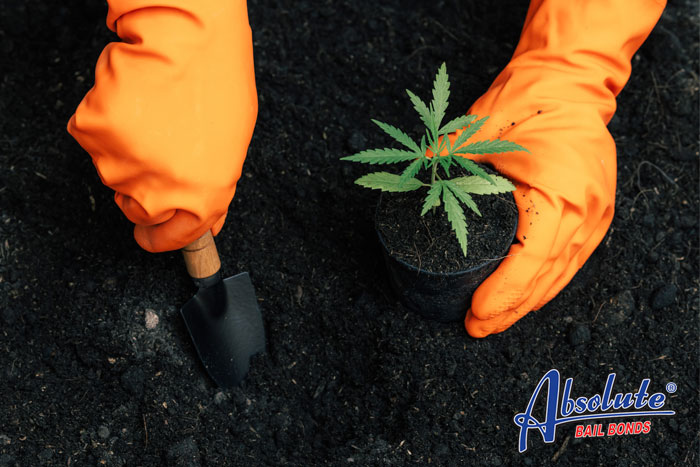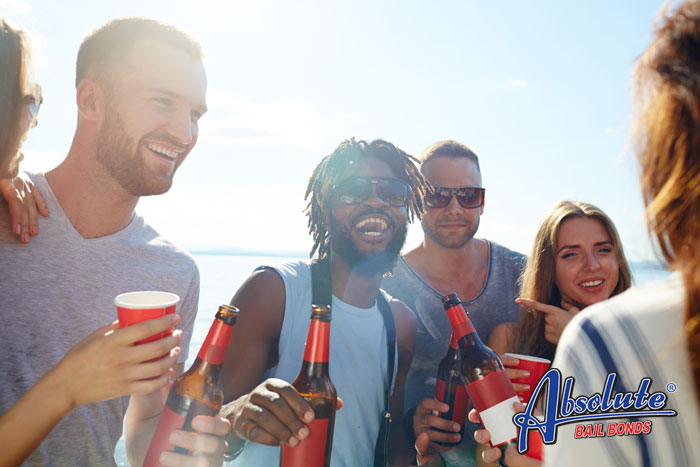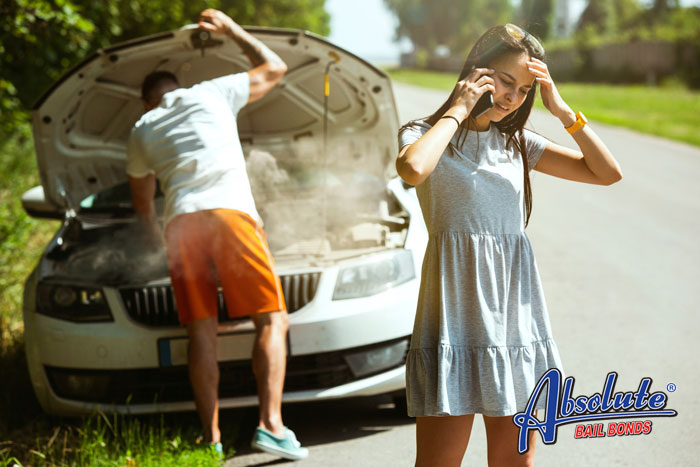
Criminal Trespassing in California
When you read through California Penal Code Section 602 you’ll learn that it’s illegal to come onto someone’s property without the owner’s permission. While this doesn’t mean you’ll face criminal charges each time you have to use someone’s driveway to turn around or when you stop in at a neighbor’s home to inquire about a lost pet, it does give the property owner the right to tell you that you’re not welcome on the property.
The other thing to keep in mind is that if you’re on someone else’s property and they request that you leave, failing to do so right away gives the property owner the right to call the police and file trespassing charges against you.
Refusing to leave a hotel or restaurant is another way trespassing charges can be filed against you.
Don’t assume that just because a person’s property is a business, that you can’t potentially be charged with trespassing. There have been cases of people who have gotten into a dispute with business owners/employees/other customers being arrested for trespassing after they entered the business and did things like harass people or refused to leave.
The majority of the trespassing cases that make their way through the California court system or considered misdemeanors. The maximum sentence for a guilty conviction is six months in a county jail and/or a $1,000 fine.
It’s important to understand that it’s not uncommon for trespassing to be added to a list of additional charges that can include violating a personal protection order, property damage, assault, etc. When a judge looks at the additional charges they could decide to hand out a maximum sentence. If the trespassing charges look relatively minor and nothing indicates that you’re a habitual offender, the sentence could be minimal.
Aggravated Trespassing in California
Aggravated trespassing is an exception to the idea that all California trespassing cases are misdemeanors. Aggravated trespassing in California is one of California’s wobbler crimes.
According to Penal Code Section 602, aggravated trespassing in California takes place when a trespasser, “makes a credible threat to cause serious bodily injury to someone else with intent to place them in reasonable fear of their own safety or safety of their family, and who within 30 days of the threat, unlawfully enters their residence, property, or workplace with the intent to carry out the threat.”
If you’re convicted of felony aggravated trespassing, the sentence could include 16-21 months in prison, felony probation, and a $10,000 fine.

California Stalking Laws
In California, you can be convicted of stalking even if you have never engaged in actively pursuing a victim as they went about their daily activities. It’s even possible to be found guilty of California’s stalking laws if you’ve never had a face-to-face encounter with the victim. The reason for this is because California lawmakers have written the state’s stalking laws in such a way that they encompass a variety of acts that include harassment, even if that harassment only takes place in the form of letters, social media posts, or phone calls.
The issue of stalking in California is addressed in Penal Code 646.9 PC. The laws states, “Any person who willfully, maliciously, and repeatedly follows or willfully and maliciously harasses another person and who makes a credible threat with the intent to place that person in reasonable fear for his or her safety, or the safety of his or her immediate family is guilty of the crime of stalking.”
The interesting thing about California’s stalking laws is that contacting someone via social media posts, making phone calls, and following them around isn’t always considered stalking. While these things may result in a police report getting filed, to convict you of stalking, the prosecution must prove that your actions/words threatened the victim so that they feared for either their life or their safety.
One of the interesting things about California’s stalking laws is that they are wobbler offenses. That means you could be charged with misdemeanor or felony stalking. There have even been instances where a person was charged with both misdemeanor and felony stalking. The bulk of stalking convictions in California are misdemeanors.
If you’re convicted of one count of misdemeanor stalking in California, the judge can sentence you to a full year in county jail, fine you up to $1,000, and misdemeanor probation. If convicted of felony stalking, your sentence can include up to five years in a state prison, felony probation, and a fine.
While stalking charges involve threatening a victim, if that victim is hurt as a result of your actions, you’ll likely be charged with assault and intimidation in addition to stalking.
Criminal charges could represent one of the problems you face following a California stalking case. Many stalking victims also decide to file a civil case against their stalker. The purpose of the civil case is to gain financial compensation for the mental anguish they suffered as a result of the stalking episode.

California’s Drug Cultivation Laws
Drug cultivation in California is addressed in Health and Safety Code 11379.6HS. The code clearly states that, “every person who manufactures, compounds, converts, produces, derives, processes, or prepares, either directly or indirectly by chemical extraction or independently by means of chemical synthesis, any controlled substance specified in Section 11054, 11055, 11056, 11057, or 11058 shall be punished.”
Getting caught manufacturing, growing, or otherwise producing prohibited drugs in the state could result in a sentence that includes 3-7 years in a state prison and a fine as large as $50,000.
In many cases, manufacturing a controlled substance represents only one of the things you’ll be charged with. There are usually several charges filed at once.
Additional charges generally include:
- Possession
- Possession with intent to sell
- Possession of drug paraphernalia
- Transportation of drugs
If the police suspect you of manufacturing or dealing with a controlled substance in California, the last thing you want to do is make the situation worse. It’s in your best interest to cooperate with the police as much as you can, which includes not doing something like trying to resist arrest. The challenge is cooperating with the police but also not saying anything that could potentially incriminate you, which is why you should contact an experienced criminal defense attorney who has a strong background in cases that involve the manufacturing of controlled substances in California.
Drug cultivation laws involving marijuana can still be a bit confusing to some people. Many mistakenly believed that since marijuana is now a legal recreational drug in California, there are no drug cultivation laws involving marijuana. That’s not the case. At this point, the average person can only legally care for a maximum of six marijuana plants at a time. Only individuals who are over 21 can use it, and you can only legally carry 28.5 grams. Some cities have ordinances that prohibit cultivating marijuana outdoors, though you’re still legally able to do so in the comfort of your own home.

The Dangers of Distracted Driving in California
Everyone always talks about how horrible drunk driving is but far less is mentioned about the dangers and repercussions of distracted driving, which is as dangerous and even more common than drunk driving.
Distracted driving in California isn’t a new thing. For as long as people have been getting behind the wheel of automobiles, there have been distracted drivers.
Examples of distracted driving include:
- Daydreaming
- Arguing with passengers
- Rubbernecking
- Trying to pick up a candy bar you’ve dropped
- Changing radio stations
- Using your cell phone
Distracted driving can result in a number of things going wrong. A single second of distracted driving can result in:
- Weaving in and out of your lane
- Striking another car/pedestrian
- Missing a road sign
- Running a red light
Over the past twenty years or so, distracted driving has become a much bigger problem. Data collected by the National Highway Traffic Safety Association indicates that distracted driving results in approximately 1,000 injuries every single day and approximately 9 deaths a day. Many of these distracted driving accidents involved a cell phone.
In California, when someone is pulled over for distracted driving and issued a citation, the ticket usually doesn’t say distracted driving, even though that’s usually the cause of the incident. The ticket usually states the effect. For example, if you were playing with your dog who was in the shotgun seat and run a red light, the ticket will likely state reckless driving or failure to yield rather than distracted driving.
If your distracted driving results in an injury or death to another person, the citation may be the least of your worries. When someone is hurt or killed as a result of a distracted driving episode, you could find yourself acting as the defendant in a civil case.
In an effort to lower the number of distracted driving incidents in California, the state has introduced the Just Drive campaign. The idea of the Just Drive campaign is to educate/remind drivers about the dangers of using a cell phone while you’re behind the wheel. Everybody involved in the campaign hopes that the program will remind drivers about how deadly answering a single text or taking a long call can be.
California’s “Just Drive” campaign is quite similar to earlier efforts to reduce the number of drivers who use their cell phones while they’re behind the wheel, but this campaign is geared specifically towards younger drivers who are between the ages of 16 and 24.
In California, you’re not allowed to have your cell phone in your hand while you’re driving. While everyone would prefer it if you simply didn’t use your cell phone at all during your commute, you are allowed to use it provided it’s set to hands-free mode, mounted on your dash or windshield, and can be turned on and off by a single finger touch.
The best way to avoid being the cause of a distracted driving incident is to keep your eyes and mind on the road.

Safe Hiking Tips for California’s Trails
California has some of the most beautiful hiking trails in the world. The summertime provides you with the perfect excuse to hit those trails and enjoy some high-quality hikes. Before you do, make sure you take a few minutes to consider your safety.
Be Realistic About Your Fitness
Let’s face it. Most of us aren’t as in shape as we’d like to be. Overdoing it and getting exhausted while on one of California’s hiking trails differs from getting too tired while working out at the gym. It’s far more dangerous. When hiking it’s better to underestimate your stamina and fitness than to overestimate it.
Don’t assume that being out of shape means you shouldn’t go hiking, it just means you need to do a little more planning. Consider both the length of the hike, if there are places to sit, how shaded the trail is, if the terrain is rough or smooth, and the site’s overall elevation before starting your hike. Make sure you’re going to have enough energy to return to your car.
Bring Water
You’re going to get hot quickly. The heat and exertion increase the odds of your dehydrating so make sure you have plenty of water in your pack. Frequently take small sips, even if you don’t think you’re thirsty. Dehydration is something that sometimes catches people by surprise.
Pack a First Aid Kit
When you’re putting together your hiking pack, make sure there is a small, well-stocked first aid kit tucked into it. The first aid kit should include some topical antibiotics, band-aids, and a wrap.
Be Aware of Your Surroundings
While you’re hiking, keep your head up and your eyes off your phone. You need to be aware of your surroundings. Know what people are around you, be ready for wildlife and dogs that are off-leash. Don’t forget to pay attention to any stinging insects.
Let Someone Know Where you Are
Even though you might prefer hiking by yourself, you should at least make sure someone knows what trails you’re going to be on and when you intend to be done hiking. Letting someone in on your itinerary helps them know if you don’t return on time and helps them direct people to the area where they should start looking for you.
Don’t assume that just because all of your past hikes have been successful that you won’t get lost or hurt on your next one.
When it comes to hiking, you always want to make safety your priority.

Drinking on California’s Beaches
Summer is finally here. For many of us, that means long, lazy weekends and evenings at our favorite beaches. We can’t get enough sun, sand, and surf. The big question is, can you bring a cooler full of beer to your favorite California beach?
The answer varies depending on which beach you’re going to.
If you’re in San Diego, the answer is no. The beaches have a strict, no-alcohol policy. Many state park beaches also prohibit alcohol, though some will allow you to pop a top.
The California state beaches where you can drink are:
- Carmel Beach, Monterey County
- Descanso Beach Club
- Doheny State Beach, Orange County
- Point Reyes National Seashore, Marin County
- Paradise Cove, Malibu, Los Angeles County
If you are going to one of those beaches and plan on bringing your favorite alcoholic beverages along, double-check the beach rules. Some have specific times when alcohol is prohibited.
Even on beaches where alcohol is allowed, you need to use extreme caution and make sure you don’t overindulge. If you get drunk and the police come by, you could be charged with public intoxication or even disturbing the peace.
You also need to be mindful of how much you drink before you go swimming, diving, or surfing. Getting into the water after you have been drinking slows your reflexes and dulls your judgment, increasing the likelihood of you getting hurt and drowning. The unspoken rule of thumb is that if you plan to go into the water at all, you should do so before you start drinking.
You should also expect the police to be patrolling the roads that lead to and from the beach, so you’ll want to make sure you’re sober before you slide behind the wheel. Before heading home, make sure that any remaining alcohol is properly stored in your cooler so that you don’t get caught with an open container in the car.
The other thing to keep in mind when you head to the beach is that littering is a crime. In addition to picking up all of your trash, make sure you collect your bottle tops, empty cans, and other alcohol-related paraphernalia before you leave.
Have fun and stay safe!

Keep Your Car Running Smoothly This Summer
For many of us, the long days of summer means a chance to take long and scenic road trips. We use the time to drive to beaches, visit out-of-the-way hiking trails, and drive to distant relative’s homes for long weekends. We love the sun and warm weather but seldom stop to think about the toll the heat takes on our vehicles.
The good news is that as long as you follow these summer car maintenance tips, your car will be ready and able to accompany you on all of your summertime adventures.
Check Your Battery’s Attachment
Most people only think that they have to worry about their battery during the winter because the cold weather forces the battery to work harder when starting the car. While the battery doesn’t work as hard during the summer months, the combination of heat and constant vibrations can cause it to steadily break down. The best way to preserve your battery during the summer is to make sure it’s securely attached so that it experiences minimal vibrations.
Another thing to look for is corrosion. Summer heat leads to excessive evaporation which can cause the battery connections to corrode. Routinely checking and cleaning the connections helps keep the battery in perfect operating order.
If your battery is three years old, bring your car to a mechanic so they can check the battery and see if it’s time to replace it.
Get Into the Habit of Checking the Coolant
The warmer it is outside, the harder your car has to work. It’s going to go through more coolant. Each month, take a few minutes to check and top off both the coolant and the oil. Keeping these topped off spares you the headache of being stranded on the side of the highway and will ultimately extend the life of our car. If either the coolant or oil is low each time you check, bring your car in so your mechanic can check for leaks.
Keep an Eye on the Tire Pressure
Asphalt gets extremely hot in the summer which is hard on your tires. In addition to checking the tire pressure about once a week and keeping them properly inflated, you also need to keep an eye on their condition. At the start and end of summer, you should consider getting them rotated and balanced. The more diligent you are about the health of your tires, the better your vehicle’s fuel economy will be this summer.

Tips for Staying Safe While Camping
Camping is a great way to enjoy both the fantastic summer weather and breathtaking beauty California has to offer. The great thing about camping is that it’s also affordable and usually something you can do at the spur of the moment.
The key to getting the maximum amount of enjoyment out of your camping adventure is making sure you are conscious the entire time you’re camping.
Be Knowledgeable About Basic First Aid
It doesn’t matter how careful you are, accidents do happen and anytime there’s an accident, there’s a risk of an injury. Before you embark on a camping adventure, set aside some time to acquaint yourself with basic first aid. Make sure you know how to tie a tourniquet to slow bleed, how to apply a pressure bandage, and how to manage a sprain.
While you’re learning how to treat common camping injuries, you should also learn how to identify and manage things like allergic reactions, head injuries, hypothermia, and heatstroke.
Knowing how to deal with a camping health crisis is great, but all that knowledge won’t do you any good if you don’t have the right supplies with you. Put together a first aid kit that has everything needed to deal with common camping injuries and make sure you have the kit with you at all times. Never go on a hike or boating adventure without your first aid kit.
Research the Area Where You’ll be Camping
Once you know where you’re going camping, take some time to familiarize yourself with the camping area. Know what dangers are in the area and learn the steps you can take to protect yourself. Most parks will let you know if there are plants, animals, and particular parts of the park you should avoid. If you learn that the park has bears, raccoons, and other forms of wildlife that have gotten comfortable with campers, take some time to make sure you have equipment that will protect your camping gear from these animals. You should also memorize the steps you should take if you find yourself in a face-to-face encounter with wildlife.
Pack a Dangerous Plants Book in Your Kit
You should always have a book that helps you identify dangerous plants that are native to the area where you’re camping. This book will not only help you identify which plants you shouldn’t touch but will also provide useful tips about what you should do if you accidentally brush against one. Knowing what types of dangerous plants are native to your campsite helps you determine what salves and lotions you should include in your first aid kit.
Make Sure you’re Equipment is in Good Repair
Before leaving on your camping trip, look over your equipment and make sure it’s in good repair. Having equipment that is in perfect working order not only makes your camping experience safer but also increases how much you enjoy your adventure.
Check-in With a Loved One
Always let someone know what your camping itinerary is and schedule regular check-ins. While this might seem like an inconvenience, knowing where to start searching for you if you don’t check-in can be a lifesaver if you fall and injure yourself so badly you can’t return to your campsite.
When it comes to camping safety, you can never be too cautious.

Prepare Your Pets for Fireworks
The Fourth of July is right around the corner which means people are going to set off fireworks. Even if you have no intention of being around fireworks, you need to take steps to protect your pets from them. Don’t assume that just because your neighbors have never set off fireworks in the past that you don’t have to worry about them.
The first thing you need to do to prepare your pet for the possibility of Fourth of July fireworks is to plan on the loud noises scaring your pet. Most pets hate fireworks. Consider getting a tight coat for your pet to wear which will help ease their anxiety. If you know that your pet is already sound sensitive and it suffers from anxiety, you should talk to your veterinarian about getting some calming medications.
As the evening grows long, don’t let your pet out of your house. The Fourth of July is one of those dates when you should complete your evening walk early in the evening. You want your pets to be tucked inside your home before the light show begins. If your pet has to go outside during, or even after the firework display, take them out on a leash. Animal shelters throughout California and the rest of the United States report that they get more reports of lost pets in the days following The Fourth. Almost all of these pets involve an animal who never runs off so their owner got too casual.
It wouldn’t hurt to take a current photo or two of your pet in the days leading up to the Fourth of July. Having a current photo that you can show local animal shelters, vet clinics, and post on lost pet social media sites drastically increases the odds of someone identifying your pet and returning them to you.
If you haven’t already gotten your pet microchipped, now is an excellent time to do so. The microchip makes it possible for animal shelters to quickly reunite you and your lost pet.
If possible, stay home so that you can comfort your pet. Even if they appear to be ignoring you, your presence really will make them feel better and it will also help them recover more quickly.
If you leave the house during the fireworks display, be careful while going through the doors. Expect your pet to want to bolt through the door with you.
When it comes to fireworks and pets, it’s in everyone’s best interest to prepare for the worst.

Fireworks and Safety
Fireworks are a fun and memorable way to celebrate the Fourth of July, but they can also be dangerous and in some cases have even been deadly. If you plan on setting off your own fireworks this Fourth of July, you owe it to yourself and your family to use common sense and practice firework safety.
Pay Careful Attention to Your Kids
Kids love fireworks and setting off an elaborate display with them is a great way to make new memories, but you don’t want the memories to include tears and emergency room visits. Never lose sight of the fact that fireworks and kids don’t mix. Encourage your kids to stand back while your setting up the fireworks and don’t allow them to play with any of the firework paraphernalia. Never leave your children unattended when there is even the smallest chance they could get into the fireworks.
Have a Ready Supply of Water
One of the biggest problems with fireworks in California is that they contribute to the wildfire problem. If it’s extremely hot and dry, you should want to hold off on using your fireworks until after you’ve gotten some rain. If you really can’t resist setting off the fireworks, at least make sure you have an ample supply of water on hand. In addition to keeping buckets, hoses, and sprayers close, you should also thoroughly spray the area and get everything damp before lighting the fireworks.
Don’t Light Duds
Yes, fireworks are expensive and it’s frustrating to have one that doesn’t perform well, but don’t try to get your money’s worth out of it by relighting it. Leave the duds alone. Lighting duds is how many people lose fingers and suffer extensive burns. In addition to not relighting it, liberally soak it with water before disposing of the defective firework.
Keep Medical Supplies on Hand
In addition to always wearing eye protection while setting off fireworks, you should also keep a medical supply kit close at hand. Make sure that the kit is liberally stocked with medical supplies that are designed to treat burns. If you get burned while lighting your fireworks, treat the injury right away and then seek professional medical help.

